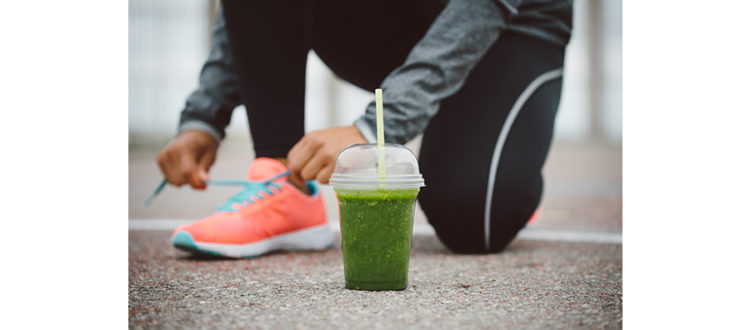May marks American Stroke and High Blood Pressure Awareness Month. As the cause of one out of every 20 American deaths each year, many of us have either been directly or indirectly affected by stroke. By dedicating this month to increasing the awareness of strokes and their risk factors, the American Heart Association and American Stroke Association work together to help decrease the frequency with which they occur. Since about as many Americans have a stroke as a heart attack each year, The American Stroke Association provides several ways for individuals to help raise awareness and show support during National Stroke Awareness Month. Here’s how you can participate:
Showing Support for National Stroke Awareness Month

1. Volunteer – By volunteering at hospitals hosting Stroke Simulation Events, you can help to test readiness for treatment when actual emergencies occur.
2. Legislation – Another way to support the expansion of telestroke technology is through legislation. By asking your legislator to support the Furthering Access to Stroke Telemedicine Act (FAST Act), you could help work to give patients in remote areas better access to stroke experts.
3. Donations – If you would like to donate to fund stroke research and treatment during National Stroke Awareness Month, or any month for that matter, every dollar helps.
4. National Cycling Day – This day in May is dedicated to showing support through social bike rides, which can still be celebrated throughout the month and all summer long.
5. Wear Your Commitment – If you want to show your support for stroke awareness loud and proud, you can represent this month while contributing to a great cause by purchasing and wearing t-shirts and other merchandise created by the American Stroke Association.
6. Connect with the Community – The American Stroke Association has created and sustained a support network online for both Stroke survivors and caregivers. If you or any loved ones are Stroke survivors, we encourage you to check out this great network.
Risks for Stroke
There is a multitude of risk factors for stroke, but luckily, we have a lot of knowledge on what they are and how to prevent them. According to the Centers for Disease Control and Prevention (CDC), many common medical conditions can increase your chances of having a stroke. These conditions include prior stroke, high blood pressure, high cholesterol, heart disease, diabetes and sickle cell disease.
Along with current medical conditions playing a role, there are also certain behavioral practices and lifestyle choices that will affect your likelihood of having a stroke in the future. Individuals with unhealthy diets, too little physical activity, obesity, excessive alcohol consumption, and tobacco use are all at a higher risk for stroke. As is true with many other personal health factors, family history can also play a role in one’s likelihood for stroke. It’s important to be aware of your family’s health history, as well as your own risk factors and work with your doctor to take the right steps to stay healthy.
Preventing Stroke
With all the risk factors out there, it may seem like strokes are inevitable, but research has found there are many ways we can prevent them. With high blood pressure being one of the leading causes of stroke, it may be beneficial to your health to help lower your blood pressure with consistent infrared sauna use.
Clinical research has shown regular sauna sessions can help lower blood pressure, the chance of heart disease, and obesity. The multitude of health issues that can cause a stroke are curbed by consistent infrared sauna use since the heat causes your body to burn calories by increasing your heart rate and metabolism. Also, frequently called “passive heat therapy,” researchers find saunas can benefit one’s health because it raises the body’s core temperature.

This temperature increase leads to increased blood flow, just like when your heart rate and temperature increases during a run or workout class. The health benefits of exercise are more well-known across the board, but saunas seem to benefit our health for some of the same reasons. In a sauna weight loss study conducted by Binghamton University in New York, results revealed individuals who used a Clearlight Premier IS-3 infrared sauna three times a week for 30 minutes per session dropped an average of 4 percent body fat over a four-month period. These participants who experienced weight loss did not change their exercise or diet patterns during the study, showing that Clearlight Infrared Saunas can make a real difference in your health if utilized consistently.
Spending time in infrared saunas has also been shown to get rid of toxins caused by fat cells in your body. Toxins, which are also called obesogens, as well as the chemical BPA make it difficult for your body to discard fat even if you have made the necessary lifestyle changes to do so. Infrared sauna use strips fat cells of these toxins, leading to weight loss and with that, better overall health and a decreased risk for stroke.
You can also decrease your risk for stroke by living a healthy lifestyle and avoiding some of the common health concerns discussed above. By sustaining a healthy diet and regular physical activity, you can improve your chances of avoiding being overweight or obese, which increase your risk for stroke. Limiting your alcohol intake and avoiding smoking altogether will benefit your health greatly. If you are worried that you or a loved one could be at risk for stroke, consult a doctor to help you find the best path to staying healthy.
Staying Healthy after Stroke
If you know someone who has survived a stroke, you want to ensure they have the best treatment possible. Amazingly, the American Stroke Association notes occurrences of stroke have been lowered from fourth to fifth place in terms of the leading causes of death in the United States. This is due to the research that has been done to improve and advance medical treatments.
Depending on the type of stroke an individual suffers from, different treatments sought in a timely manner can save lives. Think about what you can do this May to not only become more aware yourself but educate others on the steps they can take to ensure a healthy life during National Stroke Awareness Month.
 Canada
Canada Australia
Australia New Zealand
New Zealand Malaysia
Malaysia China
China



























